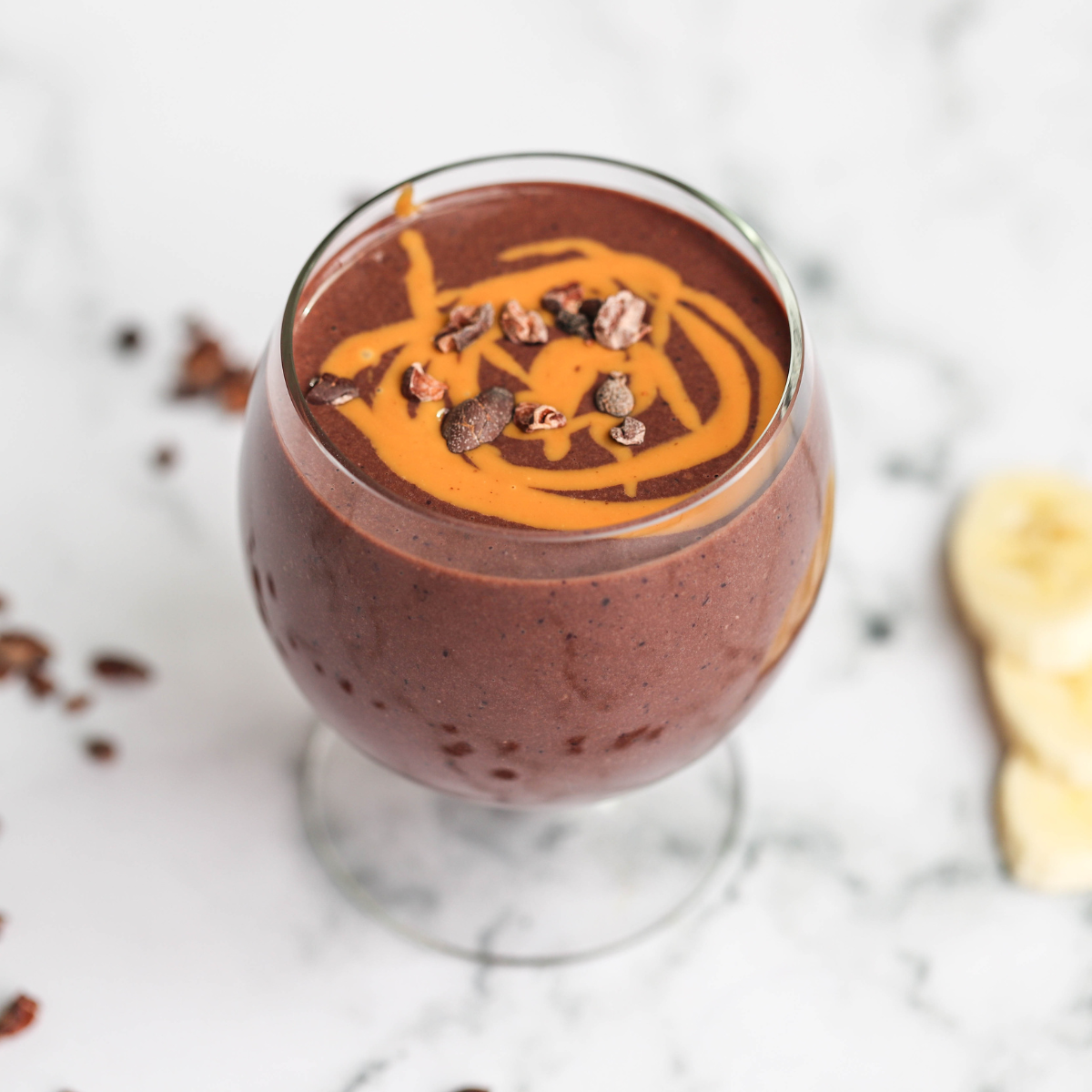
Navigating The World of Plant-Based Proteins
The surge in popularity of plant-based diets has illuminated the importance of innovative nutritional strategies. Protein, a cornerstone of bodily functions, has taken center stage in the discussion. As more individuals embrace plant-based lifestyles, the quest for meeting their protein needs becomes increasingly relevant. In this deep dive, we'll explore effective strategies and insights to help plant-based eaters ensure they are getting the protein they require. By embracing diverse plant-based protein sources and understanding the dynamics of protein intake, we can pave the way for a balanced and satisfying dietary journey.
Exploring the Rich World of Plant-Based Protein Sources
Understanding protein on a plant-based diet means diving into a vibrant world of nutrient-rich options. These sources not only satisfy protein needs but also elevate the culinary experience. Versatile and fiber-packed legumes, such as beans, lentils, and chickpeas, top the list. Grains like quinoa, rice, and oats bring their protein content to the table, enhancing nutrition and fullness. Nuts and seeds, such as almonds, chia seeds, and pumpkin seeds, provide not only a satisfying crunch but also ample protein, healthy fats, and essential nutrients. Soy products, including tofu, tempeh, and edamame, emerge as complete protein sources, enriching plant-based diets. Moreover, innovative options like seitan introduce novel textures for those committed to plant-based choices. These protein sources, each with unique flavors and nutritional profiles, empower plant-based individuals to craft nourishing and delightful meals.
Plant-Based vs. Animal-Based Proteins: A Nutritional Comparison
In the realm of nutrition, the debate between plant-based and animal-based proteins is a topic of intrigue and importance. While animal sources have historically been synonymous with protein, the rise of plant-based diets has highlighted the nutritional prowess of plant-derived alternatives. Plant-based proteins often come bundled with additional nutrients like dietary fiber, antioxidants, and healthy fats, promoting holistic nutrition. In contrast, animal-based proteins are rich in specific essential amino acids, rendering them complete protein sources. However, the diversity of plant-based protein options enables individuals to combine different sources to achieve a balanced amino acid profile. Furthermore, plant-based proteins tend to be lower in saturated fats and devoid of cholesterol, aligning with heart-healthy dietary choices. The choice between plant-based and animal-based proteins ultimately hinges on personal preferences, ethical considerations, and health goals, with both options offering unique benefits and culinary adventures.
Unlocking the Power of Amino Acids
Amino acids serve as the fundamental building blocks of proteins, playing pivotal roles in various bodily processes. Understanding the significance of amino acids is crucial for plant-based diets. While some plant-based protein sources may lack specific essential amino acids, strategic combinations can create complete protein profiles. Complete proteins provide all nine essential amino acids required by the body. Tailoring protein sources to achieve balanced amino acid intake is vital for maintaining muscle health, supporting the immune system, and facilitating enzyme and hormone synthesis. By embracing a diverse array of plant-based protein sources and thoughtfully pairing complementary foods, individuals can confidently meet their amino acid requirements and thrive on a well-rounded and nourishing diet.
Calculating Personal Protein Needs
Determining one's protein needs on a plant-based diet involves considering various factors. Age, activity level, and goals all play significant roles in this calculation. Active individuals and athletes generally require more protein to support muscle repair and growth. Growing children and teenagers also have elevated protein needs to sustain their development. Additionally, metabolism, body weight, and overall health objectives come into play. Those aiming for weight loss might consider slightly higher protein intake to enhance satiety and preserve lean muscle mass. Conversely, individuals focused on weight maintenance or muscle gain could target a moderately increased protein intake. Acknowledging these dynamic elements and customizing protein consumption to individual needs establishes the foundation for optimal health and well-being. Consulting a registered dietitian or nutrition expert can provide personalized insights and guidance in navigating these considerations.
Recommended Daily Protein Intake
Understanding recommended daily protein intake guidelines is essential for a balanced plant-based diet. The Dietary Reference Intake (DRI) suggests that the average sedentary adult should aim for approximately 0.8 grams of protein per kilogram of body weight. However, individuals engaged in regular exercise or physical activity may require slightly more protein to support muscle recovery and growth. Athletes, particularly those involved in strength training or endurance activities, may benefit from consuming 1.2 to 2.0 grams of protein per kilogram of body weight. Pregnant and breastfeeding women also require additional protein to support fetal development and milk production. Children and teenagers, especially during growth spurts, should aim for age-appropriate protein intake to ensure healthy development. These general guidelines serve as a solid starting point for calculating protein needs on a plant-based diet, with room for customization based on individual circumstances and goals.
Personalizing Your Protein Intake
Determining your specific protein needs on a plant-based diet involves a thoughtful assessment of your unique circumstances and health objectives. Begin by considering your activity level, as more active individuals typically require higher protein intake to aid in muscle repair and overall performance. Next, factor in your age and life stage, recognizing that growing adolescents, pregnant or breastfeeding women, and older adults may have distinct protein requirements. Reflect on your goals – whether you aim to maintain weight, lose weight, or build muscle – as this influences your protein needs. To get a precise estimate, calculate your protein needs based on your body weight, aiming for a range within the recommended guidelines. Monitoring your progress and adjusting your intake as needed is crucial to finding your optimal protein intake. Consulting a registered dietitian or nutrition professional can provide valuable insights and help tailor a protein plan that aligns with your specific dietary preferences and health goals.
The Importance of Tracking Protein Intake
Keeping tabs on protein intake, especially when transitioning to a plant-based diet, is essential for ensuring adequate nutrition. It provides clarity on whether you are meeting your protein requirements and aids in making informed dietary choices. Tracking offers insights not only into the quantity of protein consumed but also into the variety of protein sources in your diet. This awareness can be especially valuable for those new to plant-based eating, helping them identify potential gaps in their protein intake and make necessary adjustments. Over time, as you become more familiar with plant-based protein sources, tracking may become less necessary but remains a useful tool for periodically assessing and fine-tuning your diet. Various apps and tools are available to simplify the tracking process, making it easier to manage and ensuring that your plant-based journey is both healthful and enjoyable.
Strategically Meeting Protein Needs
Effectively meeting protein needs on a plant-based diet involves a multifaceted approach that maximizes nutrition and flavor. Diversifying protein sources is a cornerstone of this strategy. By incorporating a wide range of plant-based protein options, you ensure access to a variety of essential amino acids. Mixing various sources not only creates a more balanced amino acid profile but also enhances the culinary experience. Crafting protein-rich combinations, such as pairing beans with rice, showcases the complementary nature of different protein sources, resulting in complete and satisfying meals. This approach not only meets your nutritional requirements but also contributes to a diverse and exciting culinary journey that celebrates the rich spectrum of plant-based protein options available to you.
The Versatility of Soy-Based Products
Incorporating soy-based products into a plant-based diet offers a robust solution for meeting protein needs while exploring a multitude of delectable culinary possibilities. Soy stands out as a remarkable complete protein source, providing all essential amino acids necessary for optimal health. This nutritional richness makes soy an invaluable addition, particularly for those seeking a balanced protein intake. The versatility of soy-based products like tofu, tempeh, and edamame offers a canvas for creativity in the kitchen. Tofu can be transformed into savory scrambles, crispy bites, or creamy desserts, while tempeh's earthy flavor lends itself to hearty sandwiches and flavorful stir-fries. Edamame, whether enjoyed as a snack or incorporated into salads and pastas, contributes a burst of protein and vibrant taste. These soy-based delights not only enhance your protein intake but also contribute to a dynamic and satisfying plant-based diet.
Embracing the Power of Whole Grains
Embracing whole grains is a cornerstone of a well-rounded plant-based diet, offering not only a wealth of essential nutrients but also a substantial protein boost. Grains like quinoa, bulgur, and other high-protein options take center stage in this endeavor. These grains provide not only a satisfying texture and wholesome flavor but also deliver a significant protein punch, making them a valuable asset for those aiming to meet their protein needs. Beyond the more prominent grains, a range of lesser-known options like farro and amaranth also contribute to a diverse protein repertoire. The versatility of these grains allows them to be incorporated into an array of dishes, from salads and pilafs to soups and breakfast bowls. By embracing whole grains, you not only elevate the protein content of your meals but also tap into a world of culinary exploration that enhances the nutritional density and gastronomic appeal of your plant-based diet.
The Power of Legumes and Pulses
Unlocking the power of legumes and pulses is a definitive strategy for elevating protein intake on a plant-based diet. These nutritional powerhouses, encompassing beans, lentils, chickpeas, and more, not only offer substantial protein but also provide an abundance of dietary fiber and essential nutrients. Employing effective cooking techniques, such as soaking and sprouting, enhances the bioavailability of proteins and nutrients in legumes. By experimenting with these techniques, you can unlock the full nutritional potential of these plant-based gems. Transforming legumes into delectable dishes further amplifies their protein contribution. From hearty chickpea stews and curries to comforting lentil soups and salads, the culinary possibilities are endless. These creations not only showcase the protein content of legumes but also demonstrate their ability to infuse your diet with diverse textures and flavors, making them a cornerstone of a successful and fulfilling plant-based protein strategy.
Smart Snacking with Nuts and Seeds
Snacking smart with nuts and seeds offers a convenient and wholesome approach to meeting protein needs throughout the day. Almonds, chia seeds, and pumpkin seeds stand as exceptional choices, not only for their protein content but also for their array of vitamins, minerals, and healthy fats. Almonds provide a satisfying crunch along with protein and vitamin E, while chia seeds deliver an impressive omega-3 fatty acid profile. Pumpkin seeds, rich in magnesium and zinc, offer both protein and a delightful nutty flavor. Incorporating these nutritional powerhouses into homemade trail mixes and energy bars not only ensures a protein-packed snack but also enables you to tailor the ingredients to your taste preferences. Adding protein powder to these creations enhances their protein content further, making them an ideal on-the-go solution for maintaining energy levels and supporting muscle health throughout the day.
Protein Powder Supplementation for Optimal Protein Intake
Supplementing wisely with plant-based protein options like pea protein, rice protein, and hemp protein can be a strategic approach to ensuring optimal protein intake, especially in cases where dietary sources might fall short. These supplements offer a convenient and concentrated source of protein, allowing you to meet your nutritional goals effectively. Incorporating them into smoothies, shakes, or even baked goods can easily boost your protein intake. However, it's crucial to approach supplementation thoughtfully and under the guidance of a healthcare professional. Consulting with a registered dietitian or nutritionist before adding protein supplements to your routine can provide personalized insights and ensure that your supplementation aligns with your overall dietary needs and health objectives. This approach guarantees that you're supplementing wisely, addressing any potential deficiencies without compromising on the holistic benefits of a diverse and balanced plant-based diet.
Effective Meal Planning for Protein Needs
Effective meal planning is instrumental in achieving optimal protein intake on a plant-based diet. Balancing macronutrients, including carbohydrates, fats, and protein, in your meals ensures a well-rounded nutritional profile. Crafting a variety of plant-based meals that encompass a range of protein sources—such as legumes, whole grains, nuts, seeds, and soy products—ensures that your body receives essential amino acids while enjoying a diverse palate of flavors and textures. Sample meal plans tailored to different dietary preferences, whether vegan or vegetarian, illustrate how to structure a day's worth of meals that meet protein needs. From protein-rich breakfast smoothie bowls and chickpea salads for lunch to hearty lentil stews for dinner, these meal plans exemplify the creative possibilities within plant-based cuisine. Incorporating protein into snacks, such as nut butter on whole-grain crackers or roasted chickpeas, ensures sustained energy levels throughout the day. By thoughtfully preparing and diversifying your meals, you can savor the benefits of a protein-packed plant-based diet while relishing the culinary journey it offers.
Overcoming Common Challenges
Overcoming common challenges on a plant-based diet involves debunking myths and equipping oneself with practical strategies. Addressing misconceptions about plant-based protein is crucial, as some may believe that it's inherently challenging to obtain sufficient protein from non-animal sources. However, with the wide array of plant-based protein options available, it's entirely feasible to meet protein needs. For athletes and those leading active lifestyles, managing protein intake requires careful attention to ensure adequate muscle recovery and growth. Incorporating diverse protein sources, timing protein consumption around workouts, and considering supplementation when necessary are all key strategies. Navigating social situations and dining out can pose challenges, but with foresight and communication, it's possible to make protein-rich choices while enjoying social interactions. Engaging with menu options, requesting plant-based protein sources, and bringing protein-rich snacks can help maintain your dietary goals while participating in various social scenarios. By addressing these challenges head-on and arming yourself with accurate information, you can thrive on a plant-based diet while effectively meeting your protein requirements.
Monitoring and Adjusting Your Diet
Monitoring and adjusting your plant-based diet is a key aspect of ensuring that you're consistently meeting your protein needs. Regular assessment of your dietary choices allows you to track your protein intake and identify any potential gaps. Using apps or keeping a dietary journal can be invaluable tools in this process, providing a visual representation of your protein consumption and aiding in identifying trends over time. These methods not only help you stay on track but also empower you to make informed adjustments as needed. Seeking professional guidance from a registered dietitian or nutritionist is a wise step in this journey. These experts can offer personalized advice tailored to your specific health goals, lifestyle, and preferences, ensuring that your protein intake aligns with your overall well-being. By maintaining a proactive approach to monitoring and adjusting your diet, you can thrive on your plant-based journey and make informed choices that support your nutritional needs.
Tying It All Together: Mastering Plant-Based Protein
In conclusion, this exploration has shed light on the various facets of mastering protein needs on a plant-based diet. We've delved into the array of plant-based protein sources available, discussed the significance of amino acids and complete proteins, and provided guidance on calculating personal protein requirements. Strategies for diversifying protein sources, incorporating soy-based products, and embracing whole grains have been unveiled, alongside practical tips for smart snacking and supplementation. Overcoming common challenges, from dispelling misconceptions to managing protein intake for athletes, has also been addressed. Monitoring and adjusting your diet, coupled with seeking professional advice, form a critical part of maintaining a balanced nutritional intake. As you embark on your plant-based journey, remember the importance of embracing the diversity of plant-based proteins and making informed choices. By doing so, you empower yourself to navigate the world of plant-based nutrition confidently, ensuring both optimal health and culinary satisfaction.
Start Navigating Your Journey Here



